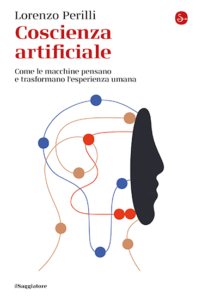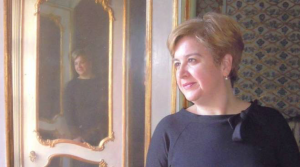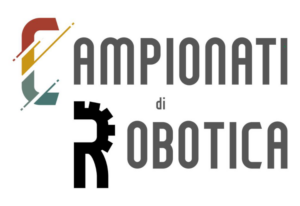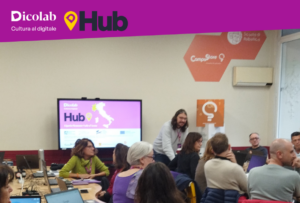
Lorenzo Perilli: Generative Artificial Intelligence. How have we come so far?
Lorenzo Perilli, Director of the Department of Literature, Philosophy and Art History at the University of Rome Tor Vergata, is a philologist and historian of

In these days of forced lockdown, and with museums, art galleries and sites closed, digital technologies can help us to live an aesthetic experience even when not moving from our desk.
We asked the Director of the Fondazione per la Cultura di Palazzo Ducale di Genova what she thinks about the use of digital and robotic technologies in and for museums.

Digital and robotics technologies for a new aesthetic enjoyment
Serena Bertolucci
I have already experimented with the use of robots both as an engagement tool, to offer the public a moment of pause, and also as a content communicator. We tested humanoid robots with kids, with young adults, and I must say that the experimentation worked very well with adults too. These humanoids, intelligent machines with human features, are incredibly irresistible.
I am convinced of the possibility of using many ways to translate meanings: at a time when the capacity of attention to content is increasingly limited, we need a means to help us find the curiosity of information.
The introduction of digital and robotics technologies in museums allows us another application. Children trust robots much more than adults, they are attracted by their shape, and through this medium of communication they quickly establish an interaction with art. Moreover, children with some difficulties find it easier to communicate with a little emotional medium like the robot. I’m referring to our experimentation with the humanoid robot Pepper which, in addition to communicating with voice messages, can also offer written messages on the monitor on his chest, thus using many communication vehicles at the same time.
Another advantage of the technological means, not negligible, is that the same device could offer multi-age contents, and multilingual.
The robot refers to the work of art, does not hold the interest back, unlike the mobile phone. The smart phone absorbs the attention, so much so that you no longer look at the work of art, it is the mobile phone that “looks” for them. “Photograph and then look at home” is what we hear in the galleries. Guaranteed, they don’t see the image, and wont see once at home.
If you don’t look, or you photograph with your smartphone, whether it’s a canvas or a sunset, you don’t see it through your eyes but through a medium, and you don’t look at the object, but at the medium, and it means you’re interposing something between you and your aesthetic experience. The aesthetic experience is personal and immediate, a personal relationship that goes from you to the artwork. The moment you put an instrument in between, things change.
The Pepper robot, on the other hand, has been a mediator and a facilitator, it is the robot that accompanies you to watch the work.
Art treasure hunt… with robot
In 2019, on the occasion of the International Museum Day, we organized at the Royal Palace of Genoa, in collaboration with Madlab 2.0 and Scuola di Robotica, a “Treasure Hunt” with robots, experimenting a new way to visit the collections. Through simple questions, the robot Pepper guided the children through the rooms of the Royal Palace in search of a hidden treasure. The robot asked the children questions about details of the artworks; thanks to the right answers, the children discovered the next step to get to the “treasure”.
It was the robot who suggested a “new” way of looking at the canvas, the statue: “In which painting is there a cat? Take a good look. Try looking,” Pepper asked the children.
The robot didn’t photograph, didn’t show the artwork on the monitor, but made the children go looking for it, and look at it again, to discover it again, and run to the robot with the answer, and it was a new “observation, a discovery”. Pepper suggested observation, without mediating. Otherwise it would be a limit of attention, like the “not-looking” through a cell phone.
Isn’t the aesthetic experience enough anymore?
The fact that many people are looking for different aesthetic experiences beyond observation – for example, total immersion in artworks through three-dimensional projections – indicates that they are looking not for a spontaneous contact with the artwork but for a different experience.
A provocation that I often present to my students concerns the fact that Leonardo’s Mona Lisa, as we know her today at the Louvre, has become an icon: some works we no longer even look at.
If I replaced the Mona Lisa with a well-made copy, no one would notice the difference. What happened to the original of the works? (For example, an artist like Banksy has torn the concept of the original to shreds.) It is now impossible to approach the Mona Lisa. She is inside a burglar-proof crystal box, certainly we can’t observe Leonardo’s “physical” trait, while for a complete aesthetic experience we should be able to approach the physicality of the canvas, of the marble.
The dramatic statement we often hear is: “everything is on the Internet”. True, we find “everything” on the Internet, however, mostly as a superficial experience. What difference is there in looking at the real Mona Lisa and the equally perfect but not true Mona Lisa, that is, technically reproduced?
If we can look closely at Michelangelo’s David, we can understand a lot, just knowing how to look. Not only do we understand that Michelangelo’s genius managed to create a masterpiece out of a wrong piece of marble. We read its narration, the story that the author, through hi artwork, wants to communicate to us.
The relationship with a work of art is initially aesthetic but then gives much more, only if the work manages to vibrate. It is clear that if we cannot understand its manufacture, we lose a lot of its history, and for this reason we should be able to observe it well. But often, it is impossible to do it. We no longer have this sense of looking compared to the ancients. It’s not only the mobile phone’s fault, the artworks must be protected, the great mass of people who visit the museums requires to distance them from visitors, by various means.
The contemplation of an original artwork corresponds to the creation of an intimate relationship with that work: a work of art is born to narrate something that shakes us, moves us, and this is why art is always contemporary. How can I use a little robot to rediscover the Mona Lisa? In trying to arouse, to renew that curiosity that we almost don’t have anymore, because we think we have already seen everything.

Lorenzo Perilli, Director of the Department of Literature, Philosophy and Art History at the University of Rome Tor Vergata, is a philologist and historian of

The Italian initiative, promoted by the Ministry of Education and Merit, as part of the Robotics Championships project, aims to enhance students’ scientific and technical

Sold out for the first training day “Dicolab. Cultura al digitale” in Genoa. The 25 places available for the first two courses in Genoa sold

Io Do Una Mano ( I Give a Hand) is a non-profit organization with the goal of helping people – especially children – with congenital
Write here your email address. We will send you the latest news about Scuola di Robotica without exaggerating! Promised! You can delete your subscription whenever you want clicking on link in the email.

© Scuola di Robotica | All Rights Reserved | Powered by Scuola di Robotica | info@scuoladirobotica.it | +39.348.0961616 +39.010.8176146 | Scuola di robotica® is a registered trademark